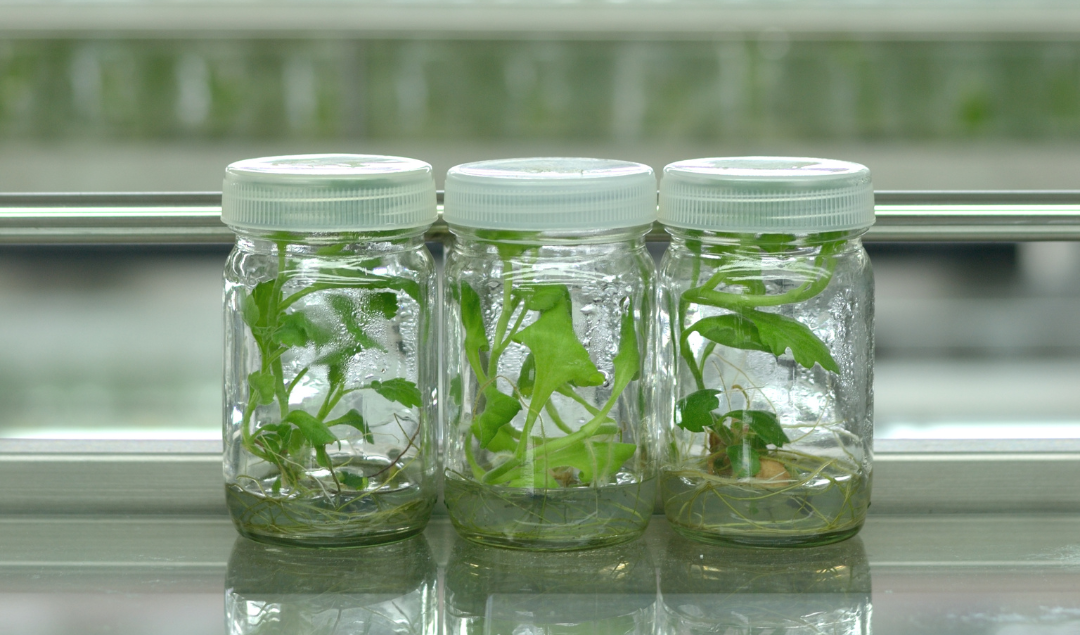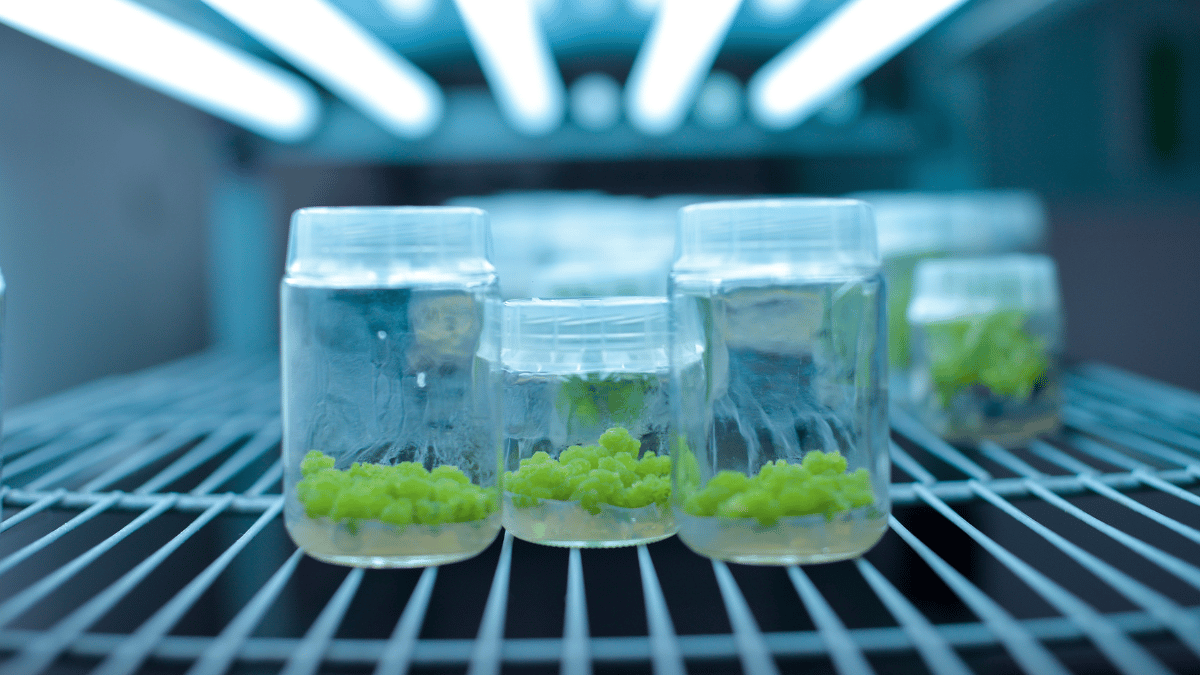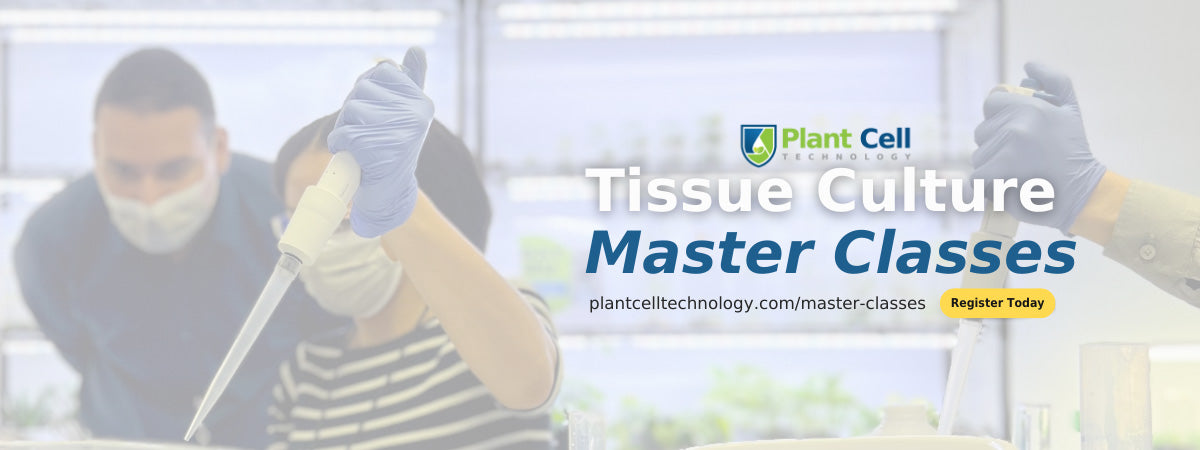
“I Propagate My Plants, So Why Should I Tissue Culture”
As a content and community manager, I leverage my expertise in plant biotechnology, passion for tissue culture, and writing skills to create compelling articles, simplifying intricate scientific concepts, and address your inquiries. As a dedicated science communicator, I strive to spark curiosity and foster a love for science in my audience.


Plant propagation is a process by which new plants can be created. There are two types of propagation: sexual and asexual. Sexual propagation can be understood as the union of pollen and egg, drawing from the genes of two parents in order to create a new individual. In short, this method involves floral parts of plants.
Asexual propagation involves taking one part of a plant (parent plant) and making it regenerate itself into a new plant. In this process, the vegetative parts of plants like roots, leaves, and stems are used. The Bartlett pear (1770) and the Delicious apple (1870) are two examples of clones that have been asexually propagated for many years.
While the old traditional methods proved good over the years, new techniques such as tissue culture have been developed to have faster-desired results using a small section of the parent plant (even tissues or cells).
Tissue culture is the process of culturing plant cells and tissues on an artificial media in a completely aseptic and controlled environment. The first serious attempt to raise tissue in culture came from Kotte (1922), who successfully cultivated isolated roots in an artificial medium. This tissue culture technology in plants is used to obtain large-scale plant multiplication.
Apart from a research point of view tissue culture technique is used for disease elimination, plant propagation, disease elimination, and plant improvement. Using this technique, small pieces of tissue (explants) can be used to produce hundreds and thousands of plants continuously.
In this article, we will cover some traditional techniques that have been used by growers for ages and how tissue culture stands out as an effective approach for plant propagation, especially when it’s done on a commercial scale.

Types of Traditional Propagation Methods
Traditional approaches have been in practice for hundreds and thousands of years. The ease and cost-effectiveness of the technique make them a go-to approach for growers. However, with these benefits, there are some disadvantages that you should consider while choosing a technique for your plant business.
Cutting
Cutting a vegetative part of a plant (parent plant) and letting it regenerate over time to become an entirely new plant. Many types of plants, both woody and herbaceous, are frequently propagated by cuttings. Cutting is done using a sharp blade to reduce the plant damage as much as possible. Before cutting, the blade must be sterilized using alcohol or a mixture of one part bleach & nine parts water to prevent transmission of diseases from infected plant parts to healthy ones.
Advantages:
- Many new plants can be grown in limited space.
- This is a quick, inexpensive, and simple process.
- Uniformity is found in offspring.
Disadvantages:
- Although it’s a simple process to deal with, it comes with a cost. Once cutting is done from the parent plant, the part that is cut can no longer take up water and hence excessive water loss could cause death. Moreover, the wound makes it susceptible to disease.
- No genetic variation is found in offspring which could increase the chance of crop failure under catastrophic disease/insect outbreak.

Looking to enhance your tissue culture skills? Enroll in Plant Cell Technology's comprehensive tissue culture master class Today!
Grafting
In grafting two plants are joined together. The upper part of the graft called the scion becomes the top of the plant, and the lower portion (the understock) becomes the root system or part of the trunk. Grafting could be the combination of different plants (could be more than two). A third plant part added between two others becomes the trunk or a portion of it. This is called an interest.
Advantages:
This method is usually helpful in producing varieties that are impossible to reproduce by cutting or other propagation techniques.
Disadvantage(s)/Limitations:
This technique also has its limitations, not all plants can be grafted. Generally, only plants closely related botanically form a good graft union. For proper grafting, stock and scion must be compatible otherwise the graft will either be weak or not survive.
Seed
Seed propagation involves the use of seeds to multiply, reproduce, or breed seedlings. Spermatophytes are plants that generate seeds. Seed propagation generally happens naturally but it can also be done on purpose by agricultural producers and farmers.
Advantages:
- High genetic diversity: This is due to the unique combination of genetic material inherited from both parents leading to greater adaptability and resilience to changing environmental conditions.
- Cost-effective: Seeds can be purchased easily and can be available to farmers or gardeners at a cheap price.
Disadvantages/Limitations:
- Due to genetic variation, it is very difficult to maintain superior quality.
- This is a time-consuming process, it takes lots of time to have trees from seeds.

Layering:
It is a technique where the new plant is allowed to attach to the mother plant (at least partially) while forming roots of their own. This asexual propagation method doesn’t require any special tool or environment to facilitate the rooting process. Some common layering methods are:
- Simple layering
- Compound (Serpentine) Layering
- Mound (Stool) Layering
- Tip Layering
- Air Layering
Advantages:
- Genetic traits preservation: In the layering process the new plant carries the traits of the parent plant, it also preserves desirable characteristics such as fruit quality, disease resistance, etc.
- Rapid growth: Plants produced by this process establish themselves more quickly than those produced by seeds because they already have developed roots.
- Suitable for a wide range: Because of the stability of this method, it can be used for a wide range of plants, including trees, shrubs, vines, and some herbaceous perennials.
Disadvantages/Limitations:
- Time-consuming process: This process can take more time to develop new plants as compared to other methods like seed propagation.
- Failure Risk: There is a considerable possibility that a layered branch or stem may not develop roots and hence can cause propagation failure.
- Disease transmission: If the parent plant has some disease then it could be transmitted to layered offspring.
Introduction to Tissue Culture
Tissue culture in plants is a vegetative mode of propagation by growing parts of plants in the form of cells, tissues, or organs in aseptic conditions. The starting point of this process is cutting the part of the plant that is going to be cultured. These cultured plants are called explants, these are then divided to determine cell period undifferentiated cells, that is callus. Callus then continues to grow and bred to be plantlets. A plantlet is an intact plant that has a root, stem, and leaves. Nowadays there are a number of types of tissue culture available such as:
- Seed culture
- Embryo culture
- Ovary/ovule culture
- Anther/pollen culture
- Meristem culture
- Callus culture
- Protoplast culture
- Large-scale plant multiplication
- Generation of improved crop quality
- Rapid and hence virus-free process(mostly)
- Single tissue can produce hundreds of plants
Disadvantages/Limitations:
- High cost
- Adaptation defect
- Risk of contamination in the lab

Why Choose Tissue Culture Over Traditional Propagation Methods?
Choosing tissue culture over traditional propagation methods offers several advantages, making it a preferred option for many plant growers. Here are some reasons why tissue culture is often chosen:
- Rapid Multiplication: Tissue culture allows for the rapid multiplication of plants. With the right conditions, a small amount of tissue can generate a large number of identical plants within a relatively short period.
- Pathogen-Free Plants: Tissue culture provides a way to produce plants free from pathogens. Through the use of sterile techniques and controlled environments, the risk of introducing diseases is minimized.
- Genetic Uniformity: Tissue culture produces genetically uniform plantlets, ensuring that each plant in a batch is genetically identical. This is particularly valuable for maintaining specific traits or characteristics in large-scale production.
- Year-Round Availability: Tissue culture allows for year-round plant propagation, independent of seasons. This ensures a consistent and continuous supply of plants, addressing the limitations of seasonal availability in traditional methods.
- Space Efficiency: Tissue culture requires minimal space compared to traditional methods. It is particularly advantageous for propagating plants in confined or controlled environments, such as laboratories or growth chambers.
- Precision in Trait Selection: Tissue culture enables the precise selection and propagation of desired traits. This is crucial for the production of plants with specific qualities, such as disease resistance, improved yield, or enhanced ornamental features.
- Preservation of Rare or Endangered Species: Tissue culture provides a means to preserve and propagate rare or endangered plant species that may be challenging to propagate through traditional methods.

Conclusion
With all the discussions about traditional methods of crop propagation like seeds, grafting, layering, etc, and newly developed technology like tissue culture, it is clear that each technique has its own pros and cons. As we say in science nothing is perfect, we have to go by the way that’s more safe and efficient. For example, crop propagation through seeds might be cheap and easily available but growing a tree from seed takes a long time also it will inherit all the the genetic flaws of the parent. In cutting we can produce new plants from a part of the parent plant. At the same time, we have a risk of failure of this method as once we cut the plant part, it has to survive on its own also new plants will be genetically the same as the parent which can increase the possibility of failure (in case if we are looking for a genetically modified plant that can survive in more adverse situation). The same trend goes with grafting as we can graft two or more plants to have a new one but it is obvious that not all plants can be grafted.
Now if we talk about tissue culture, it obviously is an improved technology for crop propagation.
We can use this technology to save endangered, rare species of plants that can be produced. Another advantage of this technology is that one doesn't need a lot of space or big plant chunks to culture, it can even be done on a cellular level. It is observed that plants grown from this technology can have inherited characteristics different from their parent. Besides all these benefits, the major limitation of the technique is that it is more expensive than other traditional methods.
Want to Tissue Culture Your Favorite Plants? Plant Cell Technology Can Help!
The advantages and disadvantages of both tissue culture and traditional plant propagation techniques are apparent. If you possess a substantial budget, establishing a well-equipped tissue culture facility can be a lucrative investment for increased profitability, especially for commercial growers. On the other hand, hobbyists may prefer the cutting approach. Opting for tissue culture opens up opportunities for streamlined processes and increased efficiency.
Plant Cell Technology stands at the forefront of revolutionizing the industry, offering a comprehensive range of products and services essential for tissue culture. Our store includes everything from MS media, agar, gellan gum, Plant Preservative Mixture™ (PPM™), culture vessels, and Biocoupler™ to masks.
Beyond providing materials, we extend our support through consultation services, addressing your tissue culture challenges promptly. For those eager to enhance their skills, our tailored tissue culture master classes cover fundamental concepts, hands-on experiences, and advanced techniques such as shoot apical meristem and synthetic seed production.
Taught by tissue culture experts with 10-30 years of experience, these classes not only educate on concepts but also share personal stories, offering valuable insights. Take the next step in your tissue culture journey – sign up for your preferred master class and elevate your expertise in the field today!
Blog Categories
View by Level
Popular Blogs

Callus Culture: Definition and Applications
Introduction Tissue culture is not just one technique! Yes, you heard right! As you know, tissue culture is an advanced...
Read More
6 Plant Tissue Culture Books to Keep Learning
Introduction Most of us are fans of books when it comes to learning a topic in detail and in a...
Read MoreSubscribe to Our Newsletter








Join the conversation
Your email address will not be published. Required fields are marked